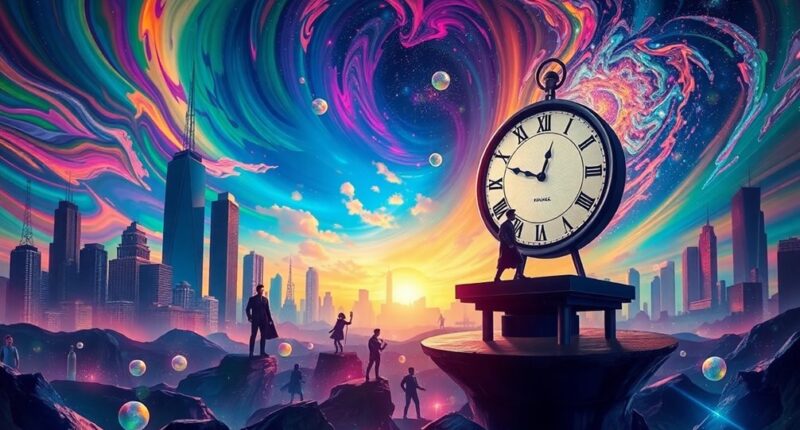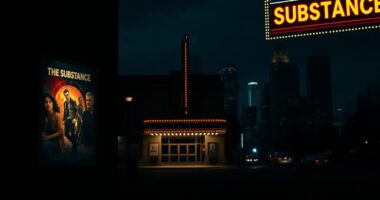Alternate reality movies push the boundaries of perception, blending time, choice, and identity. Films like “It’s a Wonderful Life” inspire reflection on life’s significance, while “Back to the Future” highlights the ripple effect of choices. “Groundhog Day” explores self-improvement through repetition, and “The Matrix” challenges reality itself. Experience pivotal narratives in “12 Monkeys,” “Sliding Doors,” “Donnie Darko,” “Spider-Man: Into the Spider-Verse,” and “Everything Everywhere All at Once.” There’s much more that might just surprise you.
Key Takeaways
- “The Matrix” challenges perceptions of reality, exploring themes of free will and the ethical implications of technology in a controlled environment.
- “Donnie Darko” delves into fate versus free will, prompting viewers to consider the impact of choices in shaping life paths.
- “12 Monkeys” presents a complex narrative that intertwines time travel and parallel universes, questioning the nature of existence and alternate outcomes.
- “Sliding Doors” illustrates how a single decision can lead to vastly different life paths, emphasizing the significance of choices in creating alternate realities.
- “Spider-Man: Into the Spider-Verse” introduces multiple versions of Spider-Man, exploring identity and personal accountability across parallel universes.
Its a Wonderful Life (1946)

Although many holiday films come and go, “It’s a Wonderful Life” (1946) endures as a timeless classic that resonates with audiences.
“It’s a Wonderful Life” remains a cherished classic, touching hearts and reminding us of our interconnectedness.
The film explores individual existence through George Bailey’s journey, where he’s shown a parallel universe devoid of his presence. This poignant revelation highlights the interconnectedness of human lives, reminding you of the profound impact one person can have on their community.
Directed by Frank Capra, it cleverly illustrates the anthropic principle, emphasizing how your personal choices shape reality.
The iconic line, “Every time a bell rings, an angel gets his wings,” symbolizes hope and kindness, reinforcing the film’s core message. Additionally, the film serves as a reminder of the power of subconscious influence during sleep, urging viewers to reflect on their dreams and aspirations.
As you watch, you can’t help but reflect on your own life’s significance and the connections that matter most.
Back to the Future (1985)
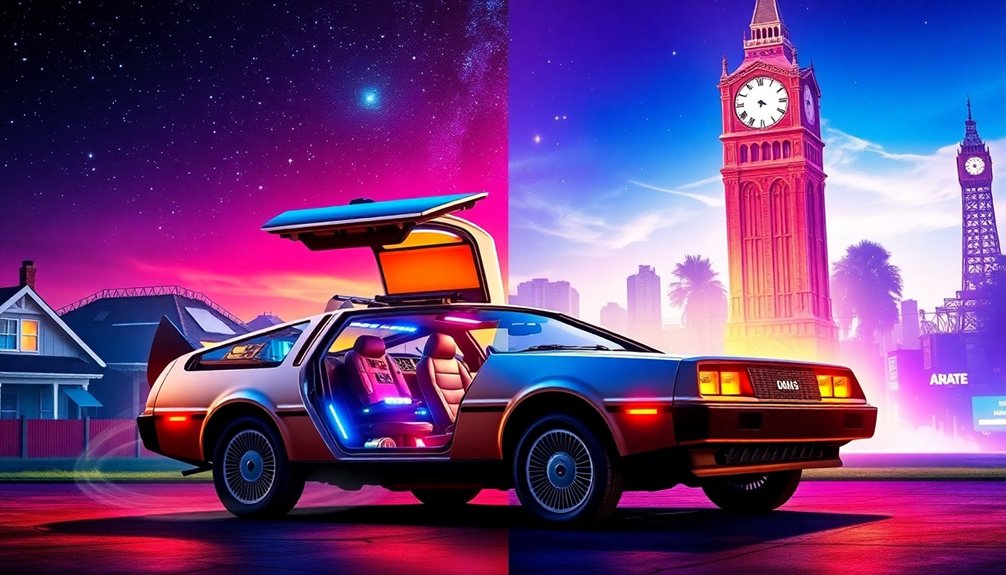
In “Back to the Future,” you witness a thrilling exploration of time travel as Marty McFly zips through the past in a DeLorean.
You’ll see how his choices dramatically shape his life and his family’s future, highlighting the weight of decisions.
The film’s clever take on alternate timelines adds depth to character development and keeps you engaged in the consequences of every action. Additionally, the concept of decentralized governance is mirrored in the way Marty navigates various timelines, showcasing the impact of collective decision-making on the future.
Key Time Travel Concepts
When you immerse yourself in “Back to the Future,” you encounter a clever exploration of time travel that hinges on a DeLorean reaching 88 miles per hour. This vehicle isn’t just a car; it’s a gateway to different times and possibilities.
As Marty McFly travels back, he inadvertently alters events in his parents’ lives, showcasing how one small change can ripple through time. The film introduces the concept of parallel universes, where alternate realities emerge based on Marty’s choices.
Each timeline diverges, allowing for multiple outcomes and emphasizing the complexities of cause and effect. This narrative cleverly avoids paradoxes, inviting you to ponder the profound implications of altering your own universe while offering a thrilling ride through time. Additionally, the idea of investment strategies is reflected in how each choice leads to different futures, similar to how diversifying investments can yield varying results.
Character Development Dynamics
As you journey through “Back to the Future,” you witness Marty McFly’s transformation from a laid-back teenager to a more responsible individual faced with the consequences of his actions.
His character development unfolds as he grapples with personal responsibility, especially when he realizes that securing his parents’ romance is essential for his own existence.
This journey allows him to explore his family’s dynamics, revealing how familial relationships shape his identity.
Through humorous and adventurous encounters with his past, Marty learns the importance of self-discovery and understanding his roots. Additionally, the film subtly highlights the impact of emotional instability on relationships, reminiscent of real-life challenges faced by individuals navigating complex interpersonal dynamics.
Impact of Choices
The choices you make can ripple through time, shaping not just your life but also the lives of those around you. In “Back to the Future,” Marty McFly’s actions illustrate the profound impact of choices. When he interferes with his parents’ relationship, he risks his own existence, showcasing time travel consequences that ripple through parallel realities.
Each small decision creates a divergence in the timeline, emphasizing the multiverse concept where seemingly trivial choices lead to drastically different life paths. As Marty navigates these challenges, he learns the importance of responsibility and the lasting effects of his actions. Ultimately, the film urges you to reflect on how your decisions can shape not only your future but also the futures of those you love. Recognizing small mistakes can enhance personal growth and lead to more mindful choices in life.
Groundhog Day (1993)

In *Groundhog Day*, you watch as Phil Connors, played by Bill Murray, gets stuck in a time loop, reliving February 2nd over and over.
This unique setup not only entertains but also sparks deep reflections on personal growth and the philosophical questions surrounding free will.
As Phil transforms through his experiences, you can’t help but consider how you’d approach life if given a second chance. The film’s theme of personal growth resonates with the idea of self-improvement often linked to astrological beliefs.
Time Loop Mechanism Explained
While exploring the time loop in “Groundhog Day,” you’ll find that it serves as both a narrative device and a profound metaphor for personal transformation.
The film illustrates how Phil Connors confronts his selfishness through repeated experiences, emphasizing the importance of choices and their consequences. This time loop not only highlights his journey to self-improvement but also invites you to reflect on your own life.
Here are four key aspects of the time loop mechanism:
- Repetition: Each day presents the same challenges, forcing Phil to adapt.
- Choices: Small decisions can lead to vastly different outcomes.
- Consequences: Phil learns the impact of his actions on others.
- Growth: The loop encourages continuous self-improvement and mastery of skills.
Additionally, the film aligns with existential themes that resonate in contemporary discussions of meaning and existence, encouraging deeper self-reflection.
Themes of Personal Growth
As Phil Connors navigates the endless cycle of “Groundhog Day,” you witness a remarkable journey of personal growth that unfolds through his repeated experiences.
Trapped in this alternate reality, Phil confronts his flaws, evolving from a cynical weatherman to a compassionate individual. Each repetition offers him the chance for transformation, pushing him to reflect on his actions and their impact on others.
He learns new skills, builds meaningful connections, and ultimately realizes the importance of selflessness.
This film beautifully illustrates that personal growth often requires confronting oneself and making conscious changes. Phil’s journey highlights how minor shifts in behavior can lead to vastly different outcomes, emphasizing the potential for change and mastery in life. Additionally, Phil’s experiences exemplify the power of setting realistic goals to maintain momentum in his quest for self-improvement.
Philosophical Implications Explored
Exploring the philosophical implications of “Groundhog Day” reveals a rich tapestry of ideas about choice, existence, and personal transformation.
The film dives deep into concepts that resonate with both Eastern philosophies and modern science, particularly quantum physics. Here are some key points to contemplate:
- Time Looping: Phil’s repeated day exemplifies how choices shape our reality.
- Parallel Universes: Each decision opens up potential alternate outcomes, reflecting multiverse theories.
- Personal Growth: Phil evolves from selfishness to altruism, illustrating the journey toward enlightenment.
- Significance of Moments: The film emphasizes that even mundane experiences can lead to profound transformation.
Additionally, the notion of color accuracy in visual media enhances our understanding of the characters’ emotional depth and transformations.
In essence, “Groundhog Day” challenges you to reflect on how your choices influence existence and personal growth.
12 Monkeys (1995)
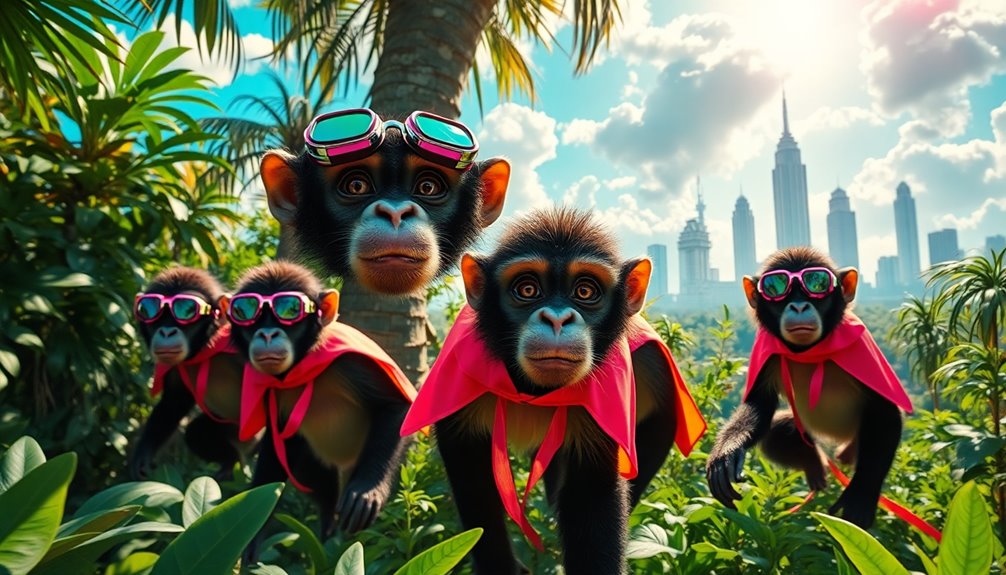
When you plunge into 12 Monkeys (1995), you encounter a gripping narrative that intertwines time travel with a desperate mission to save humanity.
Bruce Willis stars as James Cole, a man sent back in time to prevent a catastrophic pandemic. As you follow his journey, you’ll witness complex themes unfold, revealing a shocking truth about the fragility of life and the consequences of his actions.
The film explores a parallel world where sanity and fate are constantly questioned, keeping you on the edge of your seat. Directed by Terry Gilliam, 12 Monkeys features standout performances, including an Academy Award-nominated role by Brad Pitt.
With its innovative storytelling, it challenges your perceptions and captivates your imagination. Additionally, the emotional support and counseling provided to characters reflect the importance of coping with life-altering situations, much like those faced by individuals living with breast cancer.
Sliding Doors (1998)

In Sliding Doors (1998), you’re drawn into the life of Helen, played by Gwyneth Paltrow, whose fate hinges on a single moment: catching or missing a train.
This film intricately explores how small decisions can create alternate versions of life, leading to two parallel realities.
Here are some key themes to reflect upon:
Key themes in Sliding Doors include the profound impact of fate, the complexities of infidelity, and the significance of life choices.
- Impact of Fate: The randomness of one moment can shape your entire future.
- Infidelity: One path reveals Helen discovering her partner’s betrayal.
- Life Choices: Each choice leads to vastly different outcomes.
- Cult Following: The film has gained praise for its innovative storytelling.
With a 6.7 IMDb rating, Sliding Doors highlights how every decision can change your destiny in unexpected ways.
Run Lola Run (1998)

“Run Lola Run” (1998) captivates you with its high-stakes narrative, thrusting Lola into a frantic 20-minute race to secure 100,000 Deutschmarks to save her boyfriend, Manni.
This German film showcases innovative storytelling through its unique structure, presenting three distinct segments where Lola’s choices drastically alter the outcomes. Each decision she makes reveals the profound impact of seemingly minor actions, embodying the butterfly effect.
As you watch, the dynamic visual style, rapid editing, and pulsating electronic score heighten the urgency of her quest. The film explores themes of fate and chance, immersing you in an alternate reality where every second counts.
“Run Lola Run” solidifies its status as a cult classic in the alternate reality genre, challenging your perception of time and consequence.
The Matrix (1999)
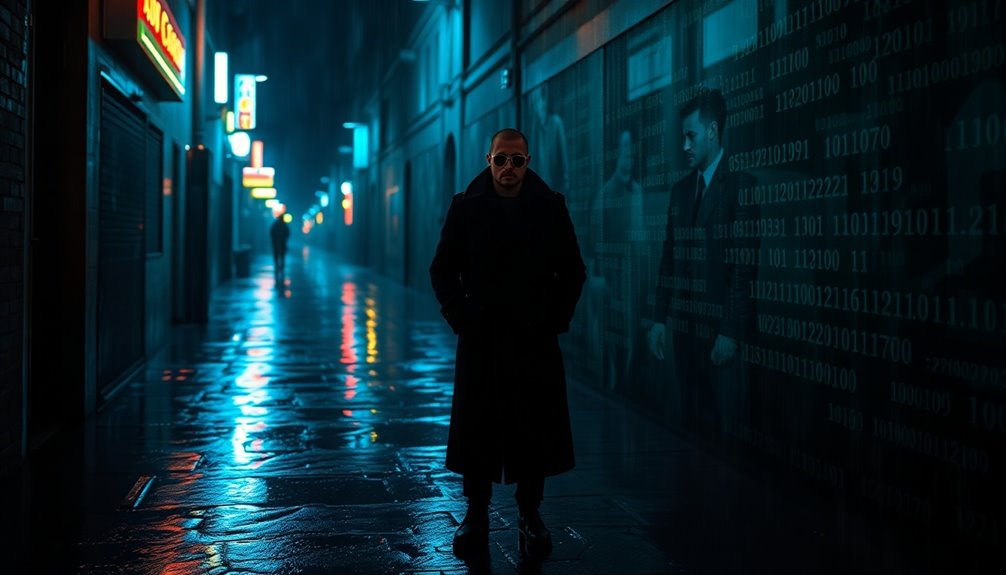
In “The Matrix,” you’re thrust into a world where reality and illusion blur, challenging what you think you know.
As Neo uncovers the truth about his existence, the film prompts you to contemplate deep philosophical questions about free will and identity.
This exploration of a simulated reality forces you to reflect on the implications of living in a world controlled by artificial intelligence.
Reality vs. Illusion
While you might think you’re living in reality, *The Matrix* (1999) challenges that notion by presenting a world where perception is manipulated by artificial intelligence.
The film takes you on a journey through a simulated illusion designed to keep humanity unaware and subdued. As Neo uncovers the truth, he faces profound questions about existence and the nature of reality.
Here are four key themes that stand out:
- The distinction between reality and illusion.
- The impact of artificial intelligence on human perception.
- The potential consequences of virtual reality.
- The philosophical parallels with Plato’s Allegory of the Cave.
Ultimately, *The Matrix* forces you to question whether the life you know is merely an illusion, leading you to confront the boundaries of your own existence.
Philosophical Implications Explored
*The Matrix* doesn’t just entertain; it invites you to ponder deeply about existence and consciousness. As you follow Neo’s journey, you’re faced with a philosophical dilemma: is your free will an illusion within a system controlled by artificial intelligence?
The film challenges you to examine your perceived reality, urging you to contemplate the consequences of living in a fabricated world. The “red pill” symbolizes awakening to uncomfortable truths, pushing you to question societal constructs.
Additionally, it raises ethical implications about the role of technology in our lives, making you reflect on the potential dangers of surrendering autonomy to machines.
Ultimately, *The Matrix* ignites a dialogue about reality, freedom, and the moral responsibilities tied to advanced technology.
Donnie Darko (2001)
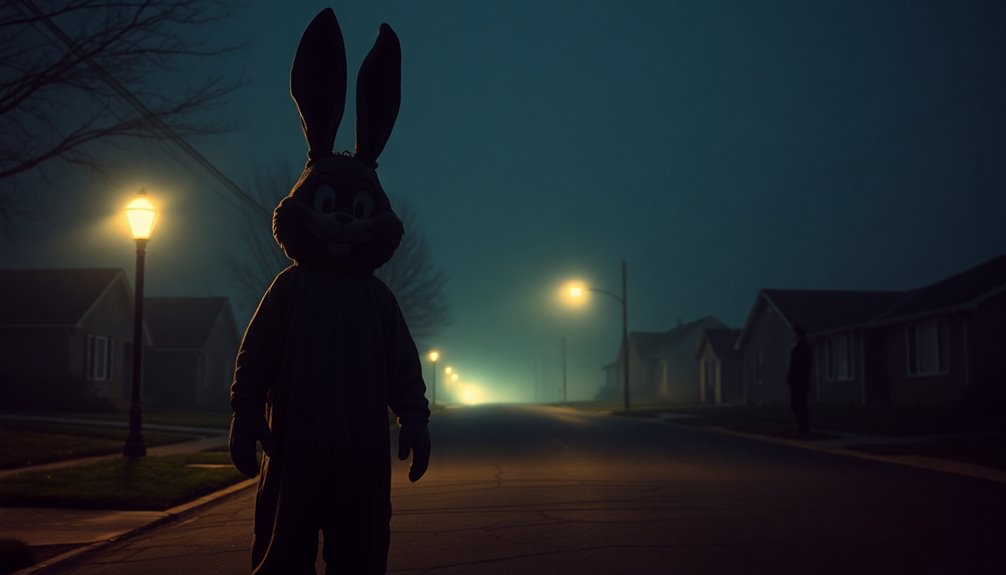
Exploring the mind-bending narrative of “Donnie Darko” reveals a fascinating tale that intertwines teenage angst with complex theories of time travel and alternate realities.
You’ll find yourself captivated by Donnie’s harrowing journey as he navigates the truth of the life he knows, unraveling the mysteries posed by visions of a rabbit named Frank.
Here are four intriguing aspects of the film:
- Wormhole Theory: The film explores theoretical physics and the concept of wormholes.
- Existential Philosophy: It investigates fate versus free will.
- Cult Following: Critics and audiences have embraced its complex narrative.
- Symbolism: The symbolism sparks extensive analysis and discussion.
“Donnie Darko” remains a seminal work that continues to challenge our understanding of reality.
Spider-Man: Into the Spider-Verse (2018)

How does a teenage kid from Brooklyn become the hero of a multiverse?
“Spider-Man: Into the Spider-Verse” takes you on a thrilling ride through alternate dimensions, introducing you to Miles Morales, a young man who unexpectedly gains spider-like powers.
This animated masterpiece showcases various versions of Spider-Man, all maneuvering their unique identities while teaming up to thwart the Kingpin.
The groundbreaking animation blends comic book aesthetics with 3D visuals, making it a feast for the eyes.
With a diverse voice cast, including Shameik Moore and Hailee Steinfeld, the film resonates with themes of identity and responsibility.
It powerfully conveys that anyone can wear the mask, earning its place as a beloved classic in the multiverse of superhero cinema.
Everything Everywhere All at Once (2022)
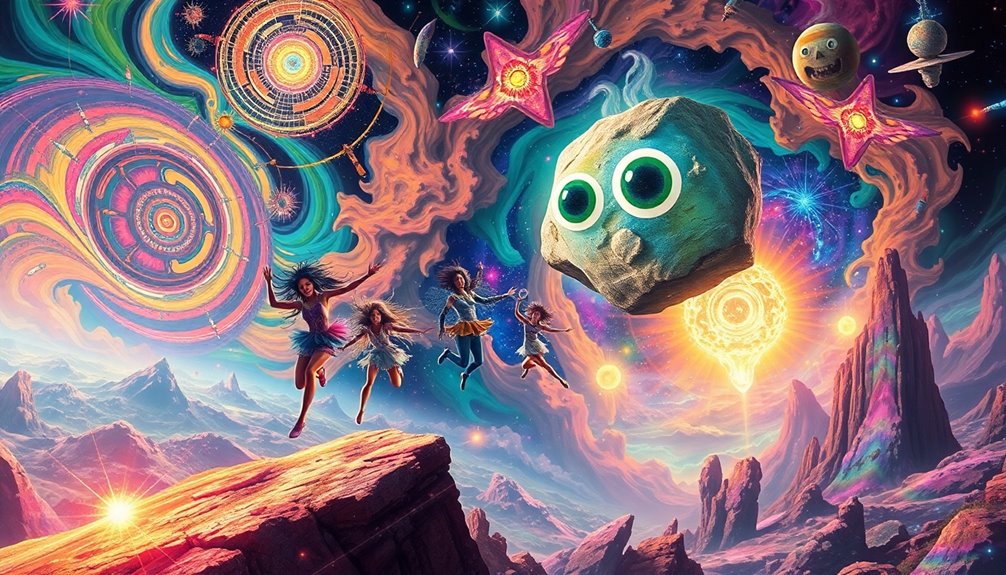
After experiencing the vibrant multiverse of “Spider-Man: Into the Spider-Verse,” you might find yourself captivated by another groundbreaking take on alternate realities: “Everything Everywhere All at Once.”
This film centers on Evelyn Wang, a laundromat owner who unexpectedly gains the ability to tap into infinite versions of herself across parallel universes. It brilliantly explores themes of identity and choice while weaving action, comedy, and science fiction into a unique narrative.
Here are four reasons why this film stands out:
- Multiple Academy Awards: It won Best Picture, Best Director, and Best Actress.
- Diverse Cast: Michelle Yeoh, Stephanie Hsu, and Ke Huy Quan deliver unforgettable performances.
- Originality: It redefines multiverse storytelling.
- Philosophical Depth: It challenges perceptions of identity and existence.
Frequently Asked Questions
What Is the Movie on Amazon Prime About Multiple Realities?
If you’re looking for a movie on Amazon Prime about multiple realities, you should check out “Coherence.”
This psychological thriller follows a group of friends during a dinner party that spirals into chaos when a cosmic event occurs.
As strange occurrences unfold, you’ll find them confronting alternate versions of themselves.
The film explores how small choices can greatly impact their lives, leading to intense emotional and existential dilemmas that keep you engaged throughout.
Do Movies Affect Our Perception of Reality?
Movies can turn your world upside down, reshaping how you see reality itself. They challenge your perception by pushing boundaries, making you question what’s real and what’s illusion.
As you watch characters navigate alternate realities or face moral dilemmas, you find yourself reflecting on your own choices and beliefs. These films spark introspection, often leading to deep discussions about existence and identity, ultimately influencing your personal philosophy and how you live your life.
What TV Show Has an Alternate Universe?
If you’re looking for a TV show featuring alternate universes, “Fringe” is a great choice. It follows a team investigating bizarre phenomena, often diving into parallel realities.
You’ll appreciate its intricate storytelling and character development, making each episode engaging.
Another option is “Dark,” which explores time travel and interconnected family dynamics across different universes.
Both shows challenge your perception of reality, keeping you hooked with their thought-provoking narratives.
What Does It Mean to Live in an Alternate Reality?
Living in an alternate reality feels like wandering through a maze of mirrors, where each reflection reveals a different version of yourself.
It means grappling with choices that shape your existence in ways you can’t fully grasp. You question the nature of your decisions, wondering if fate’s guiding hand or your free will leads you down these parallel paths.
It’s a dance with destiny, where every step you take branches into new possibilities.
Conclusion
These alternate reality films not only entertain but also provoke thought about our choices and the nature of existence. Did you know that about 60% of people believe in the multiverse theory, suggesting that countless realities could exist alongside our own? Each of these movies invites you to explore those possibilities, challenging your perception of reality. So, the next time you watch one, consider how it might reflect your own life’s choices and paths not taken.
